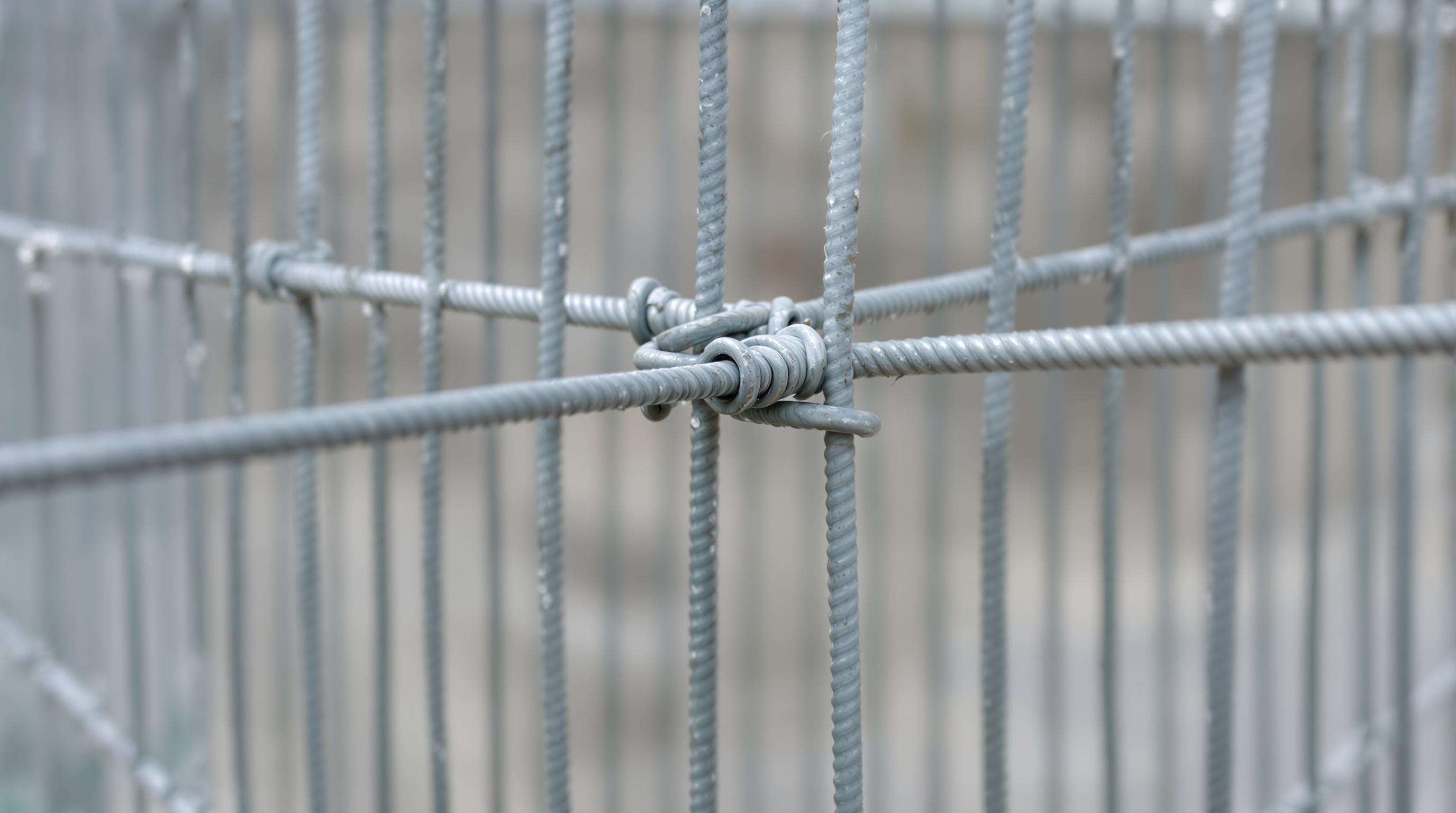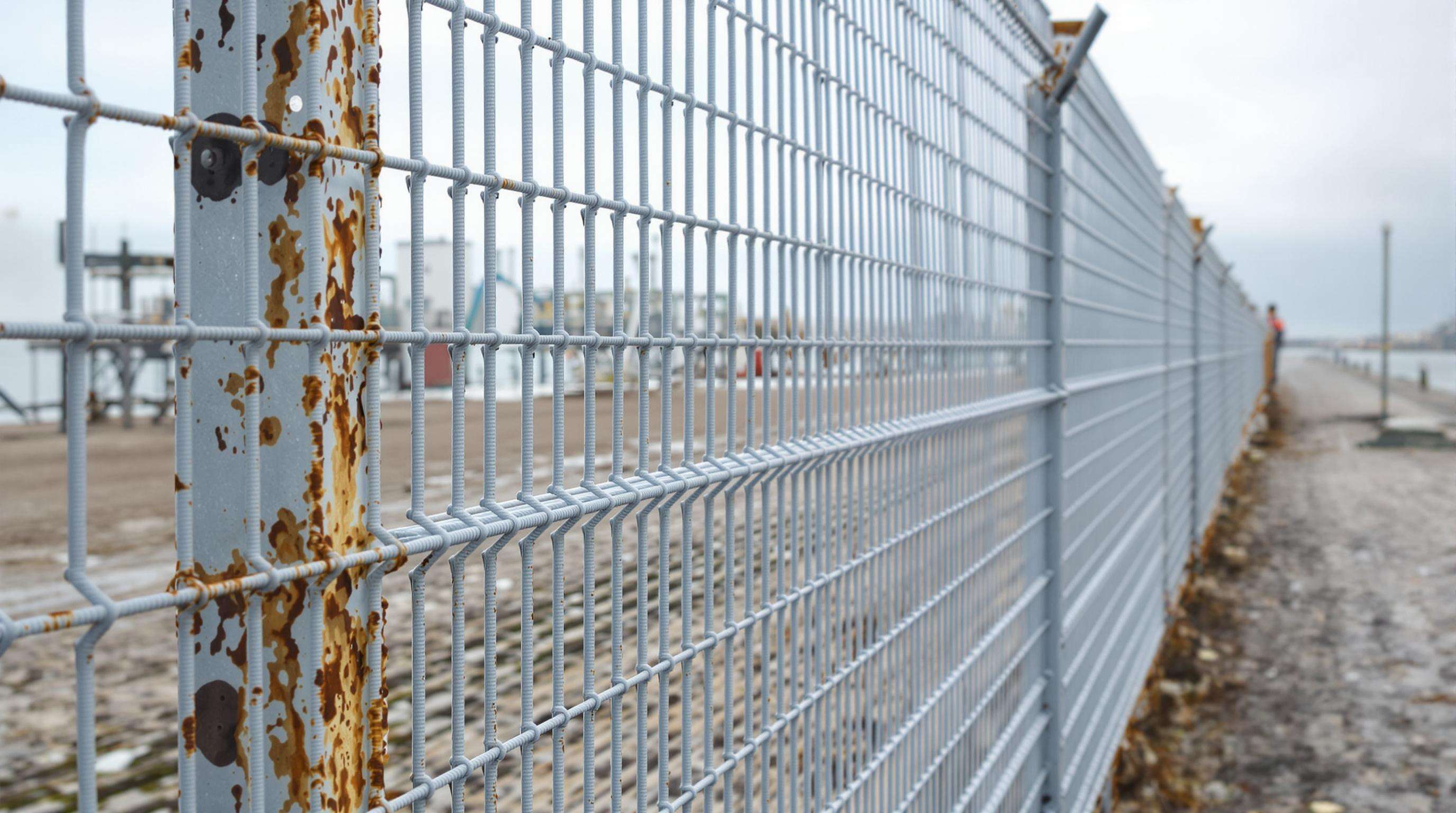Why Double Wire Mesh Fence Is Ideal for Large-Area Perimeter Security
Growing Demand in Public Infrastructure and Municipal Projects
More and more government departments are turning to double wire mesh fencing because it offers both strength and good visibility. According to recent research from NIST in 2023, the welded twin wire construction outperforms regular single wire options by about 63% in resisting forced entry attempts. That's why we see these fences going up around train stations, bus depots, and power plants where security is a top concern. City workers love the modular setup too since it cuts down installation time by roughly 40% when compared with old-fashioned welding methods. This means local authorities can get their fences installed much quicker, which comes in handy when they need to secure public parks after dark or protect critical infrastructure like flood barriers during emergencies.
Scalable Design for Schools, Airports, and Industrial Zones
Double wire mesh has this great modular design that allows expansion without weakening the structure. Airports install these standard-sized panels (about 6.5 feet by 10 feet) along their runways so pilots can see clearly all the way around the airport boundary. Schools find them useful too, as they can connect sections with bolts, making it easy to adjust security fencing as new buildings are added to the campus over time. For industrial sites, the wire is thick enough at 14 gauge to handle pretty serious impacts from big equipment - we're talking about withstanding pressure equivalent to 3,500 pounds per square inch. And despite being strong, there are still plenty of gaps between wires that let air flow through where needed.
Compliance with FAA, TSA, and ASTM Standards for Public Safety
Double wire mesh exceeds critical safety benchmarks:
- FAA AC 150/5370-10G requirements for airfield intrusion prevention
- TSA 1542.207 anti-climb specifications for critical infrastructure
- ASTM F2656-20 ML-2 penetration resistance certification
The 65mm x 200mm mesh pattern prevents footholds while maintaining 92% visibility, enabling unobstructed surveillance — a key factor in its adoption for 78% of coastal border protection projects since 2022 (DHS Facility Security Report).
Cost-Effectiveness and Long-Term Value of Double Wire Mesh Fencing
Initial Installation Costs vs. Lifecycle Savings
When it comes to cost effectiveness, double wire mesh fencing cuts initial expenses by around 35 to 40 percent compared to steel palisade systems, all while still delivering similar levels of security according to Perimeter Security Journal from last year. What makes this option even better is the welded grid construction which really simplifies the whole installation process. Installing a 100 meter stretch actually takes about 12 to 15 percent less time than putting up regular chain link fencing. Looking at long term savings too, facility managers typically end up saving somewhere between seven dollars forty cents and twelve dollars sixty cents per linear foot over ten years because there's just not as much maintenance or repairs needed down the road.
Comparison with Chain Link and Palisade Fencing Systems
| Feature | Double Wire Mesh | Chain Link | Steel Palisade |
|---|---|---|---|
| Average lifespan | 25–30 years | 15–20 years | 30–35 years |
| Annual maintenance cost | $0.8/ft | $2.1/ft | $1.5/ft |
| Intrusion resistance | 3,500N+ | 1,200N | 4,200N |
The interlocked twin wire construction provides 3x greater impact resistance than standard chain link while costing 19–22% less than palisade systems with similar load ratings.
Reduced Maintenance Needs Due to Welded Wire Construction
Galvanized double wire mesh eliminates corrosion-related repairs common in single-wire fences — coastal industrial sites report 83% fewer maintenance interventions over 5-year periods. The fusion-welded joints prevent sagging and unraveling, with only 1.2% of installations requiring post-installation tension adjustments compared to 18% for chain link systems.
Strength, Durability, and Performance in Harsh Environments
Engineering and Structural Integrity of Twin Wire Mesh Design

Twin wire mesh designs offer remarkable strength because of how they weld together vertical and horizontal wires into something that acts as one solid unit for holding weight. When force hits this kind of mesh, it spreads out across the whole thing instead of concentrating in just one spot. Tests show this cuts down on stress points by around 62% when compared with regular single wire options according to ASTM standards from 2014. At every corner where wires meet at right angles, there's actually welding done twice over. This makes sure the mesh can handle pressure coming from all directions without failing under strain.
Tensile Strength and Load Resistance in ASTM-Compliant Installations
Third-party testing confirms double wire mesh panels withstand vertical loads exceeding 1,800 lbs/ft while maintaining ±0.5% elongation — outperforming standard chain link fencing by 3:1 margins. The 4mm diameter wires achieve 550–700 MPa tensile strength ratings, equivalent to structural steel components used in seismic-resistant construction.
Real-World Performance in Industrial and Coastal Applications
When put through accelerated salt spray testing that simulates what happens along coastlines, galvanized double wire mesh only showed about 0.002 inches of corrosion each year. That's actually 83 percent better than regular chain link fencing when it comes to resisting rust. Many industrial sites that have installed these types of fences haven't experienced any structural problems even after more than fifteen years exposed to harsh chemicals and extreme temperatures ranging all the way from minus 40 degrees Fahrenheit up to 120 degrees. Some recent studies looked at how well these fences hold up during hurricanes with wind speeds reaching nearly 69 meters per second at various coastal power stations. After storms passed through, inspectors found less than one millimeter of lasting damage on all the sections they checked.
Key findings from marine corrosion studies and load-bearing analysis in extreme conditions validate this performance through standardized ASTM and ISO testing protocols.
Enhanced Visibility and Surveillance with Transparent Wire Mesh
Unobstructed Line of Sight for Security Monitoring
Double wire mesh fences give around 85 to 92 percent visibility because of their regular grid design. These kinds of fences don't have those annoying blind spots we see with solid panels or chain link barriers. The clear view helps security staff keep an eye on what's happening on either side of the fence line without weakening how strong the fence actually is. Take correctional facilities for instance. Places that switched to this type of fencing saw their response times drop by about 40% when something happens near the perimeter. That's according to research from the National Institute of Justice back in 2022. They looked at all sorts of incidents from minor disturbances to more serious threats.
Applications in Airports, Playgrounds, and Urban Schools
This particular fence design complies with TSA requirements for airport security areas because it lets security personnel see through restricted spaces clearly while still holding up against impacts of around 15 kilonewtons per square meter. Cities are starting to install them more often around schools and playgrounds lately. Take Columbus City Schools for instance they cut down on vandalism expenses by almost two thirds when they swapped out their old wooden fencing for double layer wire mesh according to a report from Education Facility Planners International back in 2023. College towns especially appreciate this kind of barrier since it keeps people safe without making the campus feel locked down. The visibility helps prevent hiding spots but doesn't give off that jailhouse vibe so common with traditional security barriers.
Integration with CCTV and Perimeter Alarm Systems
Double wire mesh setups these days come with mounting points that are pretty much tamper proof for those PTZ cameras and laser alignment gadgets. Take the Florida airport example where they switched over to wire mesh fencing around their facilities. Their false alarm rate dropped by about 31% because security folks could actually see what was going on at the perimeter before sending anyone out there. Plus, the welded wire grid works great for installing fiber optic vibration sensors right onto it. These sensors pick up cutting attempts super fast, usually within just under a second according to some research from ASIS International back in 2023. Makes sense when thinking about how critical response time is for real world security operations.
Corrosion Resistance and Longevity Through Advanced Coating Technologies

Galvanization and Powder Coating for Maximum Protection
Double wire mesh fencing gets its resistance to corrosion from several layers of treatment applied to the surface. First comes hot dip galvanizing which coats everything in zinc, acting as a sort of shield that sacrifices itself when rust starts forming. Then there's electrostatic powder coating that bonds to create this smooth polymer layer across the whole fence. The latest data from Material Protection folks shows these combined treatments cut down on corrosion by almost 90% over regular single coat options during those harsh weather simulations they run. What makes this approach so effective is how it actually reaches all those tricky spots where wires meet and at welds too. These are exactly the places where moisture tends to collect and start eating away at metal if left unprotected.
Performance in High-Salinity and Coastal Environments
Coastal installations require specialized protection against salt spray and humidity. Recent studies show properly coated double wire mesh maintains structural integrity for 25–30 years in marine environments. The zinc-iron alloy layer in galvanized coatings demonstrates self-healing properties, automatically sealing minor scratches through electrochemical migration.
Multi-Layer Coatings and Future Trends in Fence Durability
Industry leaders now combine galvanization with epoxy primers and UV-resistant topcoats for triple-layer defense. Emerging technologies include nano-ceramic coatings that fill microscopic pores in metal surfaces. The global market for advanced anti-corrosion fence treatments is projected to grow 8.2% annually through 2035, driven by infrastructure demands in tropical and industrial zones.
FAQs
Why is double wire mesh fencing preferred for public infrastructure?
Double wire mesh fencing is preferred for public infrastructure due to its high strength, good visibility, and modular design that reduces installation time, making it ideal for security-sensitive areas.
How does double wire mesh fencing compare to other fencing systems?
Compared to chain link and palisade fencing, double wire mesh offers greater impact resistance, lower maintenance costs, and similar or better security levels at a reduced overall cost.
What are the corrosion resistance capabilities of double wire mesh fencing?
Double wire mesh fencing is highly resistant to corrosion due to multi-layer coatings, including galvanization and powder coating, which protect against rust, especially in coastal and high-salinity environments.
Can double wire mesh fencing be integrated with modern security systems?
Yes, double wire mesh fencing can be integrated with CCTV, perimeter alarm systems, and fiber optic sensors for enhanced security monitoring and rapid response to intrusions.
Table of Contents
- Why Double Wire Mesh Fence Is Ideal for Large-Area Perimeter Security
- Cost-Effectiveness and Long-Term Value of Double Wire Mesh Fencing
- Strength, Durability, and Performance in Harsh Environments
- Engineering and Structural Integrity of Twin Wire Mesh Design
- Tensile Strength and Load Resistance in ASTM-Compliant Installations
- Real-World Performance in Industrial and Coastal Applications
- Enhanced Visibility and Surveillance with Transparent Wire Mesh
- Corrosion Resistance and Longevity Through Advanced Coating Technologies
- FAQs
 EN
EN

